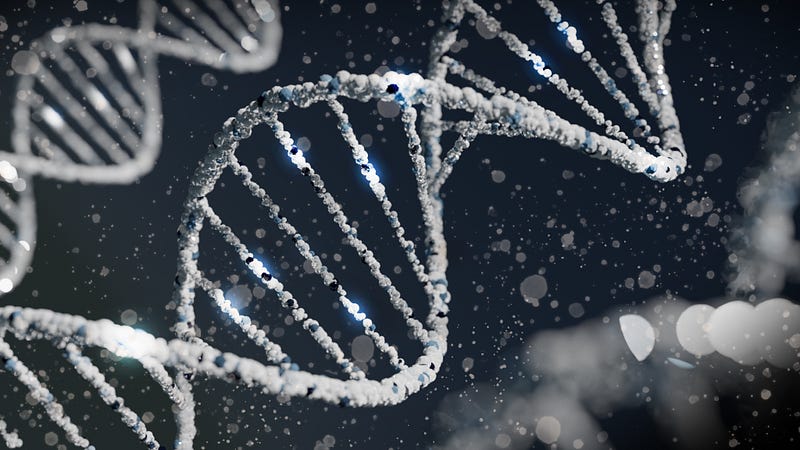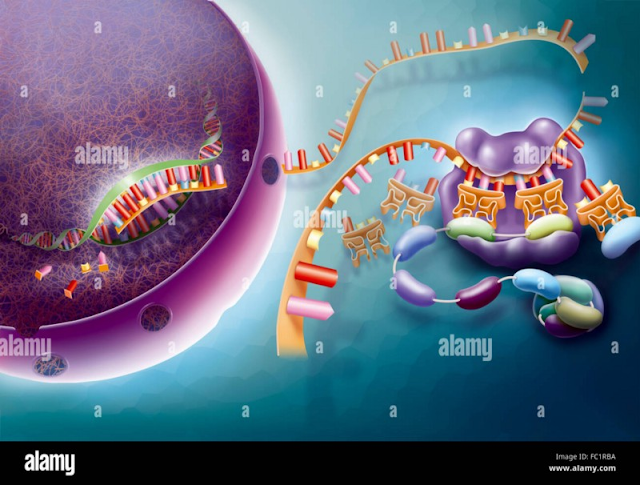The flow of genetic information from one generation to another is set up by nature through complex biological mechanisms. The molecular structure of DNA is the ultimate clue to its ability to replicate, code for proteins, and undergo mutation.
 |
| Photo by Sangharsh Lohakare on Unsplash |
Introduction
DNA consists of a double-stranded helical structure. Both the strand are complementary to each other and bonded together by double and triple H — bonds (Hydrogen bonds) between the nucleotide’s base pairs. The direction of the two strands is antiparallel to each other.
Complementary is the tricky word here. A complementary base pair means, G (Guanine) is always bonded with C (Cytosine), and A (Adenine) is always bonded with T (Thymine).
There are no alternatives to this purine—pyrimidine bonding.
Thus, if the strands are separated, each strand of DNA has a sequence of purines and pyrimidines that bond with their complementary pairs.
This exclusive clue benefits the most to the DNA replication process.
DNA replication
DNA molecule duplicates itself in a way that every cell has an identical copy of the first duplex DNA molecule.
Replication is carried out by a series of nuclear enzymes. The most important ones are helicases and polymerase.
 |
| Image Courtesy: Mauro Rodrigues / Alamy Stock Photo |
Mutation
Mutation in simple terms is - a change in the DNA sequence. The change could be as small as a single nucleotide unit to even a larger section of DNA rearrangement.
DNA mutations result due to deletion, insertion, or a rearrangement of nucleotide units.
 |
| Image Courtesy: iqoncept |
Most of the mutation in DNA takes place during replication (cell division). Apart from this viral infections and exposure to mutating agents also contribute to some extent.
During replication, the enzyme DNA polymerase adds nucleotide units to a newly forming DNA strand. This sometimes results in the addition of the wrong nucleotide, resulting in a replication error. The mismatched nucleotides cannot form H bonds and thus forms a bulge in the DNA chain.
Another part of DNA polymerase carries out the corrections for replication errors. It’s called proofreading.
However, sometimes the proofreading might not detect the errors. These changes the DNA sequence and might cause mutation.
Protein Synthesis
DNA is a macromolecule, a sequence of nucleotides, and a code. Biological machinery deciphers this code into RNA in a process called transcription.
 |
| Image Courtesy: BSIP SA / Alamy Stock Photo |
mRNA is the specialized type of RNA for protein synthesis or translation. It is the sequence of mRNA that decides which amino acids are to be linked together during the formation of the peptide chain.
Ribosomes and RNA collectively work in coordination to form a protein sequence. After the sequence is synthesized, it folds to give the protein its characteristic shape and function.
All the proteins in plants and animals are synthesized in a similar pattern. It is how all living organisms are formed out of a single cell.
Collectively, the sequence of cellular synthesis or the flow of genetic information inside the cells of living beings is called the central dogma of molecular biology.
DNA → RNA → Protein
Biologists were able to conceive these processes only after the molecular structure of DNA was discovered. James Watson and Francis Crick (1953) made this discovery, which revolutionized the overall concepts of biology and evolution. All the preconceived myths of heredity and evolution finally earned an explanation.
Hence, the molecular structure of DNA is crucial to understanding the concepts of replication, mutation, protein synthesis, and evolution.
Conceptual Questions:
What are the key differences between RNA and DNA?
Basically, there are a few differences between RNA and DNA.
- Firstly, DNA contains deoxyribose as its sugar backbone instead of ribose sugar in RNA.
- DNA contains Thymine as a nitrogenous base instead of Uracil in RNA.
- DNA can self-replicate while RNA is synthesized by DNA.
- Mostly, DNA is double-stranded and larger than RNA.
- RNA forms the genetic material of a few viruses. Almost all other living organisms have DNA as their genome.
Where and when does DNA replication occur in cells?
DNA replication occurs in the nucleus of cells. In bacteria where a true nucleus is absent, it takes place in the cytoplasm (nucleoid region).
This process takes place during the S-Phase of the cell cycle.
Is the central dogma of molecular biology applicable to all organisms?
The central dogma is a basic understanding of how genetic information flows in biological systems. It is applicable to all organisms carrying DNA as their genetic material.
However, in cases where the genome is composed entirely of RNA, it is not accurate. It is because an enzyme reverse transcriptase can encode DNA from an RNA sequence. This process occurs in viral genomes, and recent studies have detected an abundance of this enzyme in animal cells.
The central dogma of molecular biology thus awaits a new level of validation in the recent future.
Can there be two DNA molecules inside a cell?
There can be two or more DNA molecules inside a cell. Apart from the genomic DNA, extrachromosomal/ extranuclear DNA is also found. Besides, a few cell organelles like mitochondria and plasmids also contain DNAs.
Bacteria, Fungi, and other organisms have circular DNA called plasmids beside the genomic DNA in their cytoplasm. Plasmids carry different functions in bacteria such as — environmental resistance, metabolic activities, etc.
Why is protein synthesis called translation?
Protein is synthesized by ribosomes using the codes in mRNA molecule. This mRNA is obtained by the transcription of a section of DNA called the gene.
This mRNA contains a sequence of nucleotides based on which the amino acids are assigned to a growing polypeptide chain. The process is equivalent to translating — where mRNA is decoded into a protein molecule.

Post a Comment